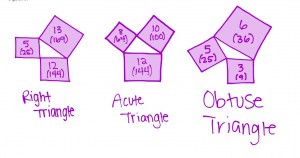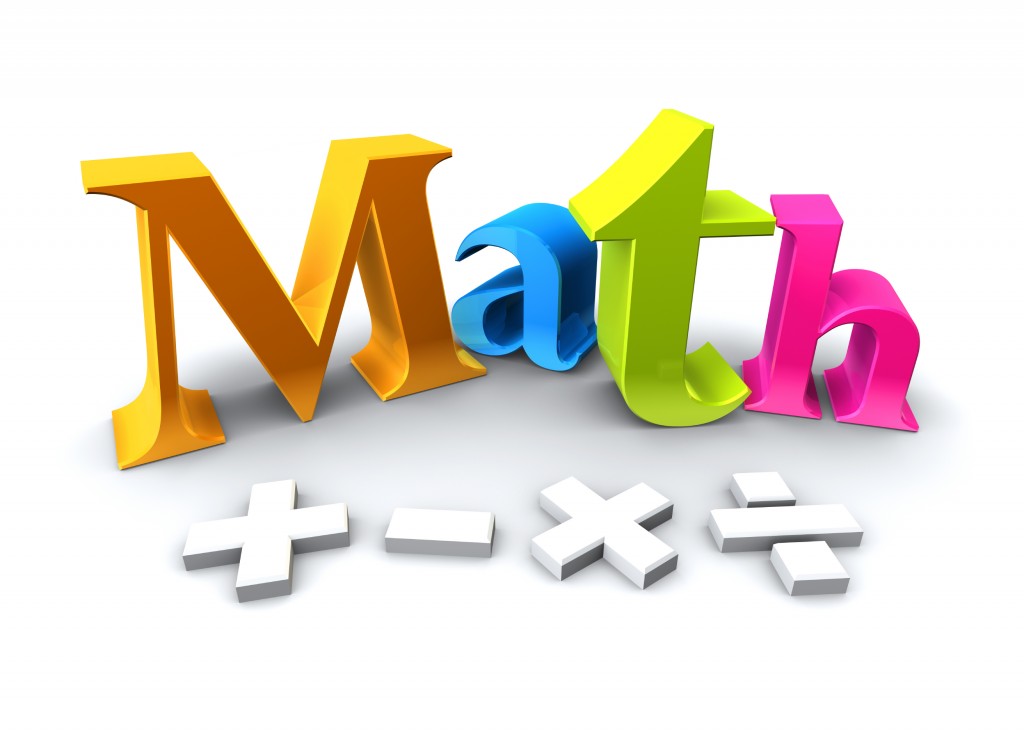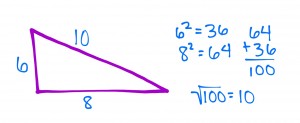Blog 31: Angle Relationships
The different angles that I have encountered in this unit so far are alternate exterior angles, alternate interior angles, vertical angles, corresponding angles, same side interior and same side exterior. These angles are very important to know because if your given a pair of parallel lines with angles already placed but there’s an angle missing then these angles will help you figure out which numbers you need to write. For example, sometimes there are situations when there’s an angle on one side and there’s another missing. These are sort of easy because all you need to do is subtract 180° from that number to get the missing number.
Blog 32: Angles in a Triangle
The sum of all the sides of a right triangle, acute triangle, and obtuse add up to 180°. Today in class we learned how to find missing angles in a triangle so they could all add up to 180°. For example, if a right triangle had only two sides and there was one missing all you have to do is square them and add the two sides and then subtract them from 180° and then square root your answer.
Blog 33: Triangle Inequality
 What I noticed about the three side lengths was that when you got the squares to line them up and see if they actually made a triangle a side was usually too big so it wasn’t possible even when you tried to make it obtuse. For example the side length 3 for the small side, 8 for the medium side, and 13 for the large side don’t make a triangle at all because the 13 dominates both sides and you can’t make it obtuse or acute for all the sides to touch. Three side lengths won’t make a triangle if all sides don’t connect with each other. Three side lengths will make a triangle if the sides are the correct size to make either an obtuse, acute, or right triangle.
What I noticed about the three side lengths was that when you got the squares to line them up and see if they actually made a triangle a side was usually too big so it wasn’t possible even when you tried to make it obtuse. For example the side length 3 for the small side, 8 for the medium side, and 13 for the large side don’t make a triangle at all because the 13 dominates both sides and you can’t make it obtuse or acute for all the sides to touch. Three side lengths won’t make a triangle if all sides don’t connect with each other. Three side lengths will make a triangle if the sides are the correct size to make either an obtuse, acute, or right triangle.
Blog 34: Triangle Side Length Patterns
 The patterns that I see between the sum of areas and the two smaller squares and the area of the larger square that formed the triangles is that they all have to be able to fit with each other in order to make an actual triangle. If three squares have sides that make an acute triangle, then the sum of the areas of the two small squares must be greater than the area of the large square. If three squares have sides that make an obtuse triangle, then the sum of the areas of the two small squares have to be less than the area of the larger square. If three squares have sides that make a right triangle, then the sum of the areas of the two small squares must be equal to the area of the large square.
The patterns that I see between the sum of areas and the two smaller squares and the area of the larger square that formed the triangles is that they all have to be able to fit with each other in order to make an actual triangle. If three squares have sides that make an acute triangle, then the sum of the areas of the two small squares must be greater than the area of the large square. If three squares have sides that make an obtuse triangle, then the sum of the areas of the two small squares have to be less than the area of the larger square. If three squares have sides that make a right triangle, then the sum of the areas of the two small squares must be equal to the area of the large square.
Blog 35: Square Root
 What is a square root ? A square root is when you reverse squaring a number. For example the square root of 100 is 10 so your practically dividing it. When you square 10 it’s 100 so when you square root 100 it will be 10. That is a example of a perfect square because it’s an answer with no decimals. Another type of a square root is a non-perfect root, an example of this is finding the square root of 131. When you square root 131 you get 11.445 so here you would round the number to 11.45 and since it’s not a whole number it would be a non-perfect root.
What is a square root ? A square root is when you reverse squaring a number. For example the square root of 100 is 10 so your practically dividing it. When you square 10 it’s 100 so when you square root 100 it will be 10. That is a example of a perfect square because it’s an answer with no decimals. Another type of a square root is a non-perfect root, an example of this is finding the square root of 131. When you square root 131 you get 11.445 so here you would round the number to 11.45 and since it’s not a whole number it would be a non-perfect root.
Blog 36: Pythogorean Theorem
 With the pythagorean theorem it can be easier to find the missing side length of a right triangle. All you have to do is that if the hypotenuse is the one missing then you square the other two numbers and then add the areas. When you have added the areas you square root the total to find the missing hypotenuse. If one of the legs is the one missing then you square the sides and subtract them. When you have subtracted the numbers then you square root it to get the missing leg. This way it’s much easier to find the missing sides.
With the pythagorean theorem it can be easier to find the missing side length of a right triangle. All you have to do is that if the hypotenuse is the one missing then you square the other two numbers and then add the areas. When you have added the areas you square root the total to find the missing hypotenuse. If one of the legs is the one missing then you square the sides and subtract them. When you have subtracted the numbers then you square root it to get the missing leg. This way it’s much easier to find the missing sides.






Leave a Reply